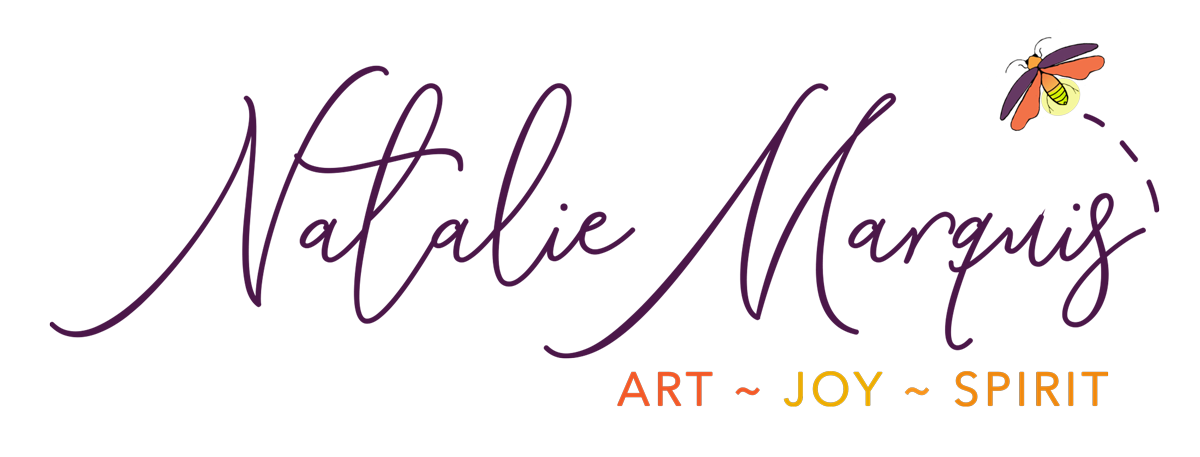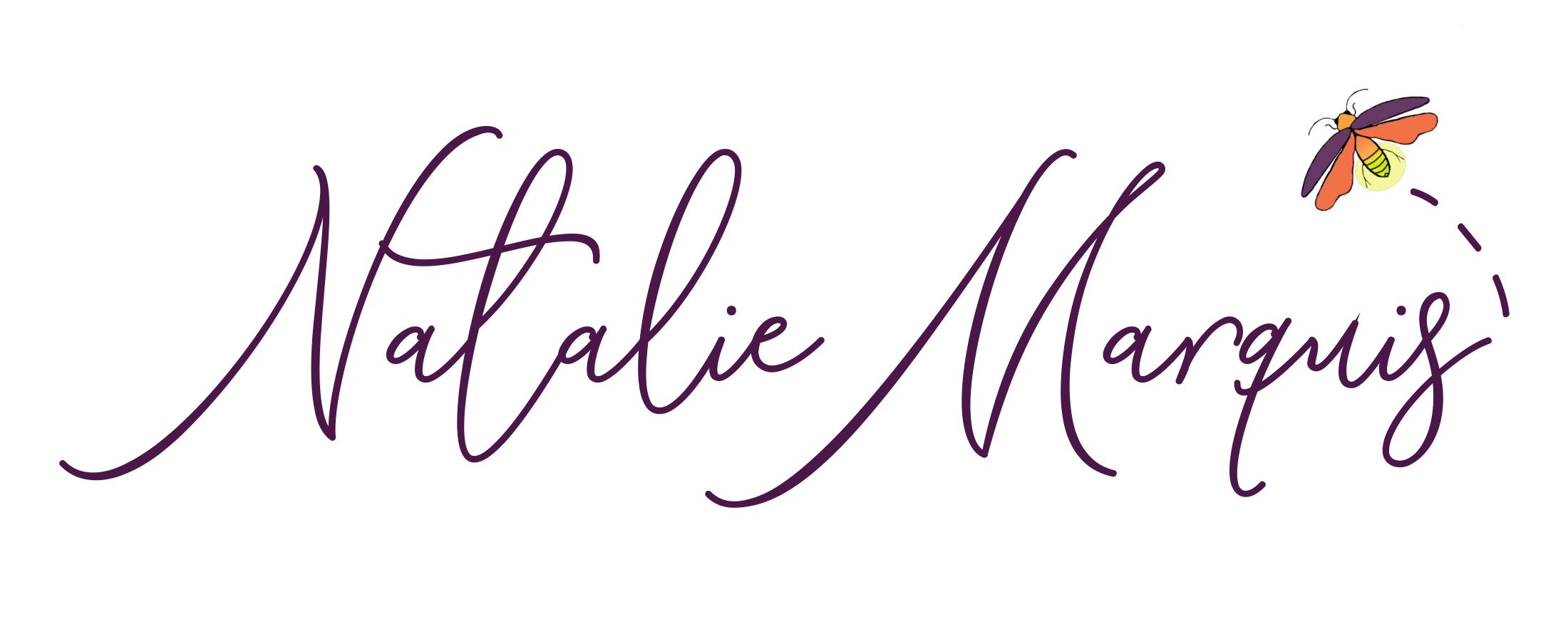Intuitive Painting Part 1 – Starts & Stalls
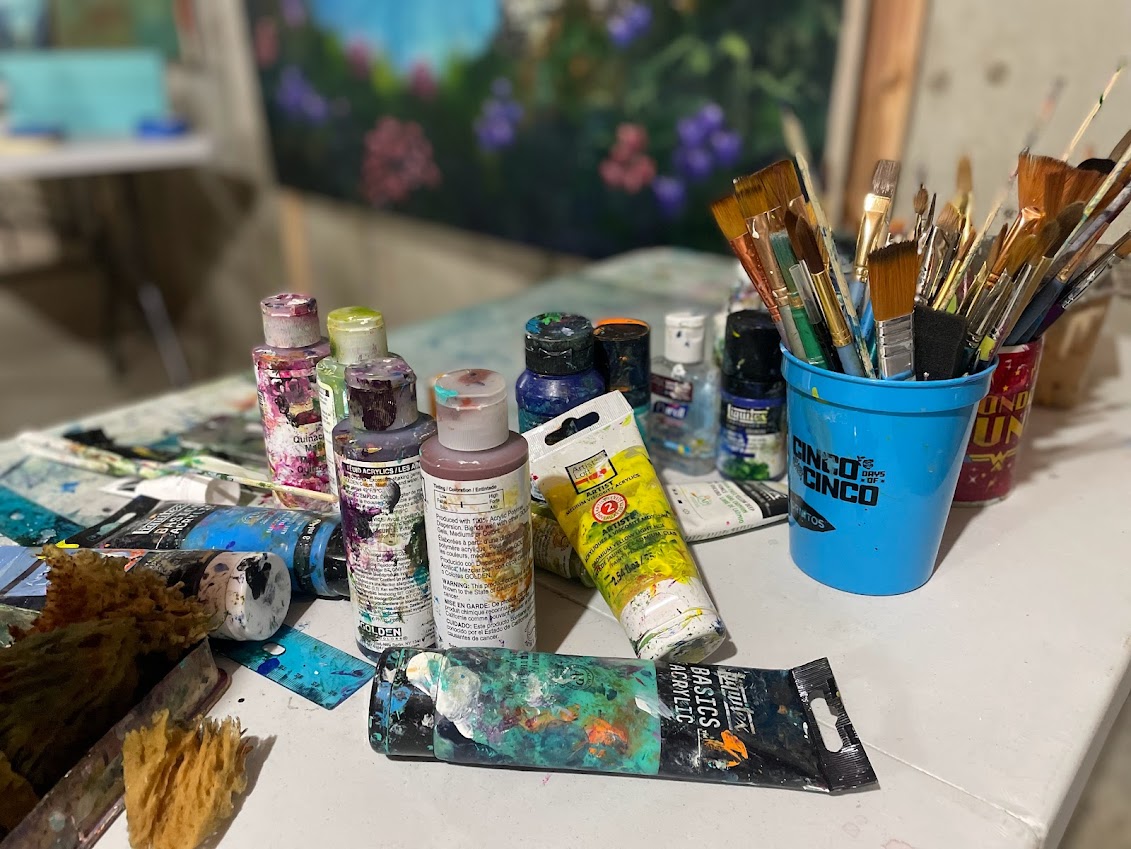
I’ve found there are three places where the creative process and intuitive painting can get tricky: the beginning, middle and end. I start painting with joyful abandon but then it quickly fizzles out. Or, I hit the messy middle and it’s now an incohesive muddle. Or, I’m nearing the end, and I either finish too soon or find myself overworking the painting. In all three cases, I’ve lost touch with my intuition. In each of these stages there are intuitive pitfalls and opportunities. For brevity’s sake I’m going to address each stage in a separate blog article.
Let’s start with the beginning stage. If you can’t seem to get started or you’ve started a painting and quickly stalled, it’s not that intuition has deserted you. There are a couple of things that might be hindering your progress.
Pitfall #1: Your Intuition is Speaking But You Are Disregarding It
Maybe you are getting nudges to try something new but you’re not listening, or worse yet, you are disregarding your inner compass. Your intuitive heart wisdom is tugging you in one direction but your fears and limiting beliefs are squashing the whispers as soon as they bubble up. Are you getting a nudge to paint whimsical women, then quickly telling yourself that it’s too childish? Are you known as a landscape painter with a distinctive style but secretly yearn to paint abstract? The negative nellie in your mind quickly points out that you could lose customers / followers if you go in a different direction. Or maybe your heart keeps reaching for pink, orange and purple, even though you know that blue paintings sell better?
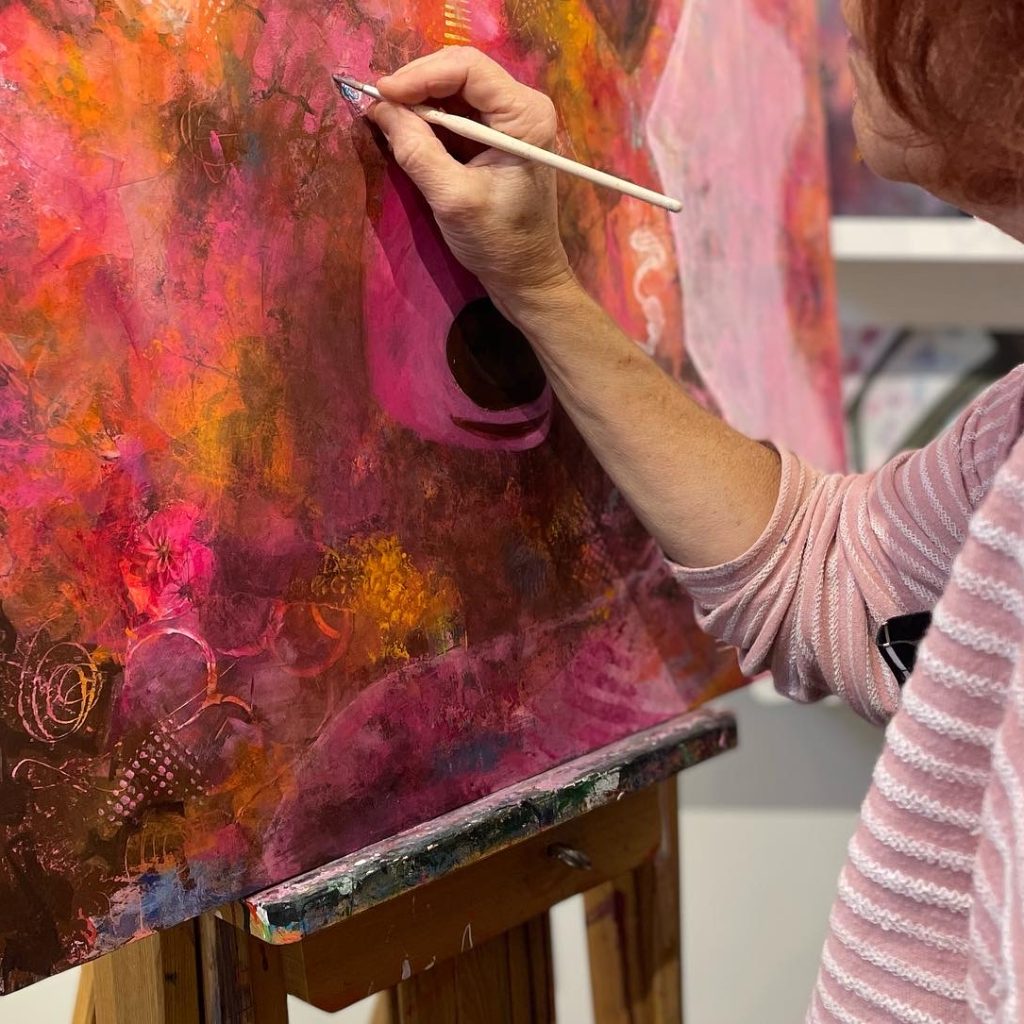
Okay, I’ll confess, that last one was me. Ever the marketer, I am always fascinated by industry trends and what sells better. Still, I hadn’t realized I was ignoring my intuitive nudges. I told myself I was being practical and that it was good to experiment with other colors, especially one that sells well. Luckily, I soon noticed how painting with blue felt sludgy and heavy and shifted back to colors that felt good. It was like uncorking a bottle of champagne and in no time at all I was back in the sparkly flow.
Although we often won’t know exactly why intuition is leading us in a particular direction, it’s important to follow the tugs. Sometimes it’s because it wants us to experience more joy in the moment. Other times it’s leading us to an experience that will inform and enrich our work and our lives. And, it’s often only when we look back that we can see all the synchronicities that lead us to where we are today. To create with more ease and joy, start recognizing and taking action on the intuitive hits you do receive.
Pitfall #2 Your Intuition Needs a Focus
If you are struggling with intuitive painting or making your art, it might be that you’re relying too much on intuition to do all the work. Intuition is meant to be a partner, not a crutch. If you’re thinking intuition alone can make beautiful paintings, I think you’ll be disappointed. Intuition with out a human to work through remains invisibile. The magic of intuition is not in the intuition itself (although it is pretty freaking cool!), it is in how intuition moves through the filter of your personal preferences, skill level, and design knowledge to help you create meaningful, authentic, only-you-can-make art.
When a beginning flounders, I may be that your intuition simply needs an intention or focus. In my experience as a professional intuitive reader (a.k.a. psychic), intuition works much like a transistor radio. If I love jazz music, I’ve got to turn the dial to the sound frequency of Jazz. It doesn’t work well when I turn on the radio and hope for the best. Sure sometimes I get lucky, but sometimes I get talk radio or maybe even static.
During an intuitive reading, through intention, I tune into a client’s energy and spirit guides. You could say I turn my intuitive “dial” to the person I’m reading. But when a client asks me, “How are my adult children doing” or “is my dog happy”, I always ask for a first name of the child or the pet. For an adult child, I may even ask for the state they are living in as this helps me turn my intuitive antenna (dial) in that direction so I can receive insight more clearly. The same goes for the creative process.
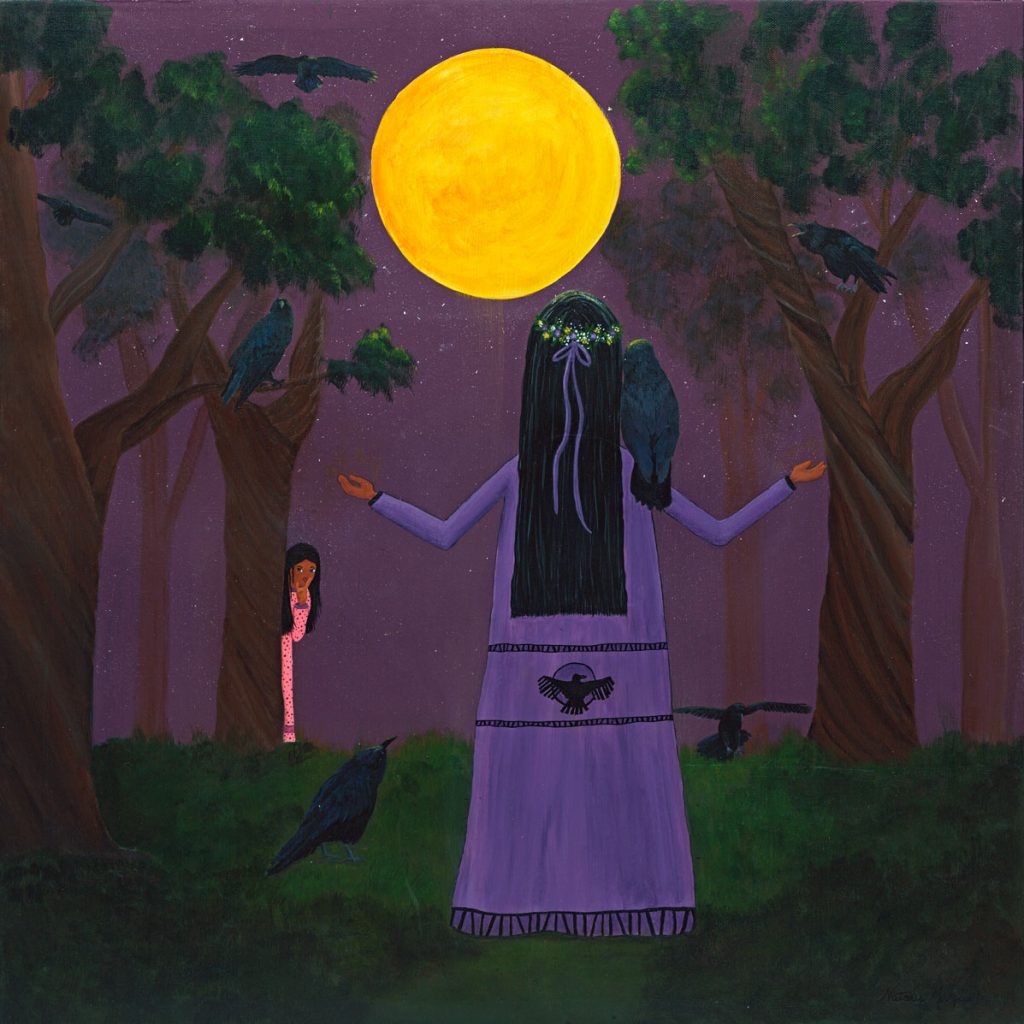
Intuition works better with intention and focus. If you’re not consciously tuning into something, then you’re quite possibly tuning into everything, in which case your intuition is responding to your emotional frequency, which can be as ever changings as New England (USA) weather. You can quickly regroup by choosing a focus. Ideally, the focus should be something that delights, fascinates, or intrigues you. Not only does it feel better, these higher vibration emotions will also amplify your intuition and flow.
For many artists beginning isn’t an issue at all because they already have a working idea (i.e. focus) of what they want to paint. They sketch it, cull reference materials, and/or make a design board to flush out the idea. For these artists, beginning isn’t typically a problem. Inspiration has already sparked a flame, and the fire of that inspiration spurs them from concept to canvas to begin the painting.
When I painted the Kachina Woman series, my process was very much like the above. I created thumbnail sketches of my ideas, and once I had a composition worked out, I started painting. However, these days, I start more loosely and intuitively. This is not to say that I will always work this way because one process isn’t better than another. The only process that is better is the one that feels juicy and exciting to you – the one that makes getting to the canvas irresistible.
Follow the Breadcrumbs of Your Creative Curiosities
A focus doesn’t need to be narrowly defined. I can be, but it can also be somewhat vague. The focus of my last series was pretty specific: Winterberries. However, last summer, I had a vague idea that I wanted to explore creating misty white spaces in my paintings. A few of my earlier abstract paintings touched on this and I noticed I was irresistibly drawn to it in other artist’s work such as Kerry Schroeder’s mystical botanical paintings and Kathleen Rietz’s Dreaming in the Garden floral series.
Being drawn to something over and over is a serious intuitive nudge! Follow it and disregard any mind chatter that tells you it’s a waste of time. The creative quest will always lead you into the unknown, the process will inform and transform you and your paintings –- and that’s where the real gold is!
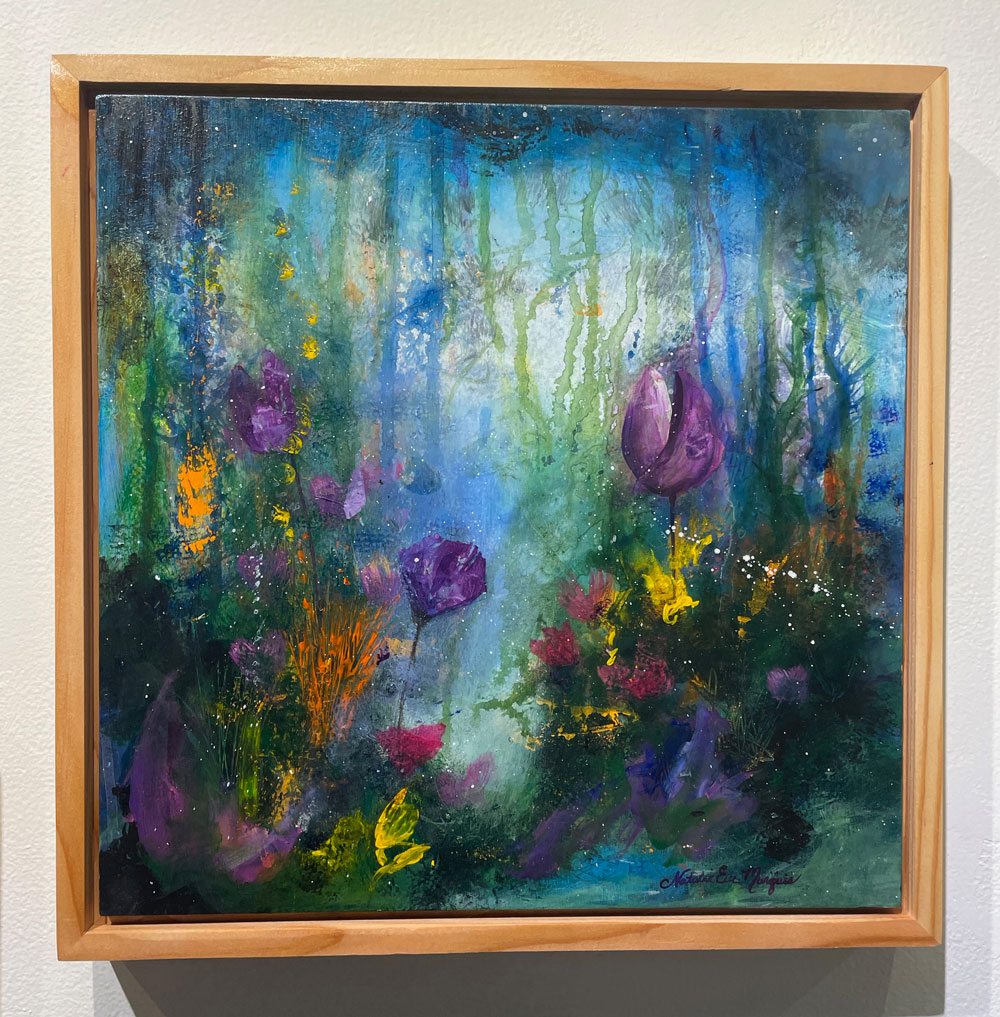
I dove in to explore how to paint mist, not by consciously constructing a painting; in fact there was no sketching or planning at all. I didn’t begin by trying to create a painting. Instead, I experimented with mop brushes, catalyst wedges, and a paper towel crumpled up, dabbed in paint, and smudged onto the surface. It turns out that the smudgy affect of paper towels was my favorite! And, so I continued to play. How about adding some drips, and look what happens when I scratch through dark layers of paint over there, bright colorful bits of an under layer peek through, oh so fun! Can I add a flower under water? Why not? I’m an artist, I can paint the world the way I want and the way I feel it.
This type of play is fantastically liberating!
The freedom and discovery process of experimentation and play literally fills me with giddy delight. It also creates all the conditions for slipping into flow. That coveted zone where painting becomes easy and intuition and discernment dance effortlessly. And it was from within this zone, that the Marshscape paintings emerged. I didn’t have a plan, but I created the conditions and then I followed the tugs of my curiosity.
Your Art Will Teach You Things about Art & Your Life
As I explored how to create mist in my paintings, the process began to reveal to me all the ways that mist is meaningful to me. As synchronicity would have it, I was also working on the Love Poem painting during that time, which contains poems that I wrote more than 40 years ago. As I mulled over which love poems to include, I also discovered poems about God, sunsets and morning mist. To my surprise, my fascination with mist wasn’t new; it has been present since I was girl!
That summer I also celebrated my 60 birthday with a kayaking trip in Maine. Every morning we rose early and kayaked across the lake to the marshes in hope of spotting moose. The mornings were mesmerizing with soft pink skies and mist rising over the water. The only sound to be heard was our paddles breaking the water. Ahhh, I was in mist heaven!
As I created one Marshscape painting after another, the paintings and the mist were also teaching me other things about myself. As an intuitive reader and energy healer, I get to play in a realm that most, including myself, consider to be magical. For something to be magical, it contains a bit of mystery as well. For me mist represents: softness, mystery, and magical fleeting moments. From a scientific standpoint, mist happens when warm air encounters cool water or land. This white vapory effect occurs in a spectrum, on one end of the spectrum it appears as light and airy mist. On the other end of the spectrum it appears, as fog, which is denser and thicker.
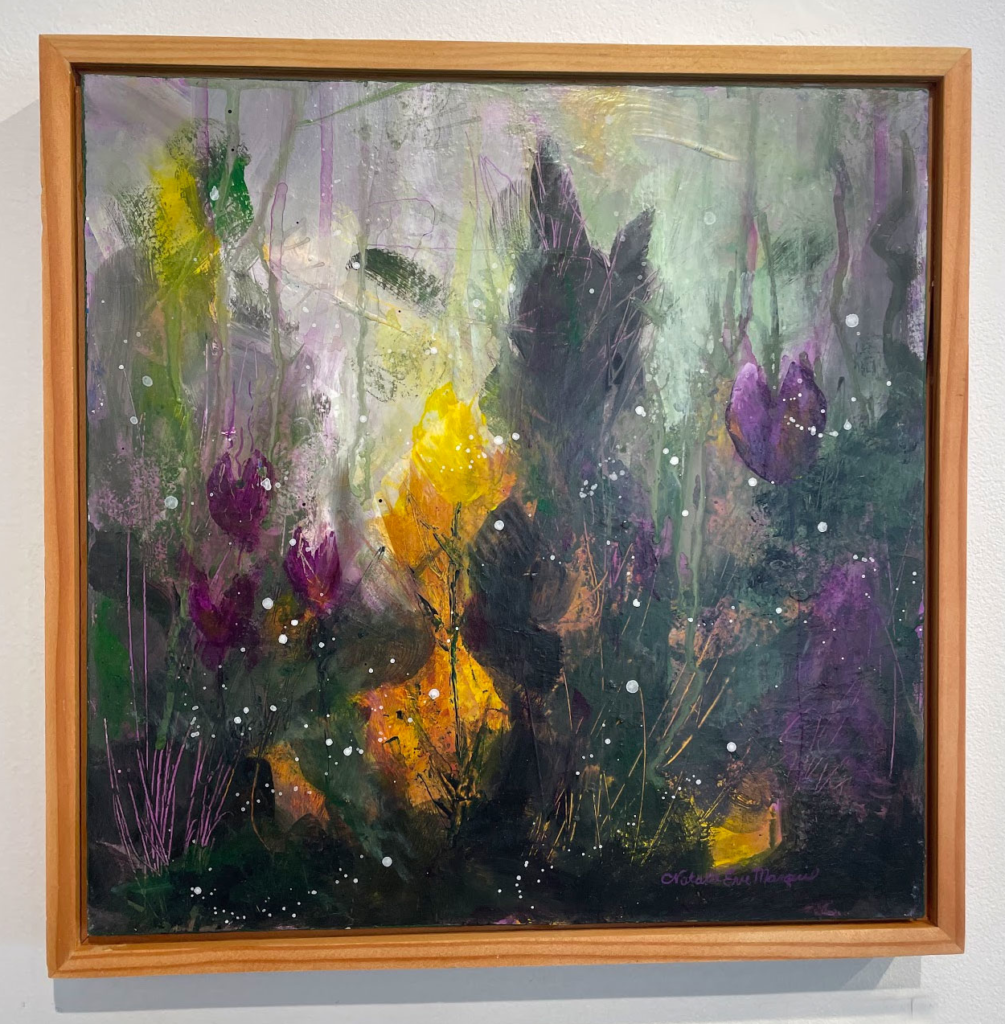
While I find mist to be magical, heavy fog can feel spooky and unsettling. If the mist/fog is a metaphor for life, then a little mystery makes magic, but too much mystery is scary, at least for me anyway. While I love being able to access information and realms that most people don’t, there are extremes of that spectrum that I find downright unsettling. I want to see through the dense fog of the unknown, and at the same time, I don’t want to venture in too deeply. I am not brave or bold enough to explore those realms in extremes. For example, I have friends that have used Ayahuasca to heal and receive visions. The hallucinations, many of which can be horrifically frightening, plus the purging effect, sound much too extreme for my gentle spirit. While I sometimes boldly adventure forth, there are some edges I’m not willing to explore. Painting the misty watery marshes helped me see that mystery occurs on a spectrum, and that it’s up to me to decide how much of the spectrum I want to explore. While I am an advocate of stretching ones’ comfort zones, I also believe it’s essential to honor one’s personal boundaries (mental, physical, emotional, and spiritual). I also came to understand that I need to personally explore the full spectrum to appreciate and be awed by its existence. I can accept that there are many deeper mysteries I’ll never full understand in this lifetime, and this too is part of life’s magic as well.
I learned all of this, both how to paint misty dreamy paintings and the message mist had for me, by choosing a loose focus. A focus gave my inspiration and intuition something to dial into so it could guide me to my most authentic expression, and teach me more about myself in the process.
I hope this encourages you look at the intial stages of your painting process and intuition in new way. Your intuition is eager to be of service. It hasn’t abandoned you but you do need to act on it, or at least make conscious choices on which intuitive suggestions to act on to avoid letting your inner critics run the show. And, if you’ve started to paint and then seem to be floundering despite hours exploration, then it might time to give your painting and intuition a little focus. Mine your life or old sketch books for subjects or ideas that intrigue you or delight you. Pick one thing to focus on. By “focus”, I mean start exploring it – sketch it, college it, paint it, and/or experiment and play with it in whatever way feels most fun for you. Be alert to any negative inner chatter that is shooting down ideas before you’ve had a chance to explore them. Your small self craves a sure path, but your highest self, and your intuition, comes alive when there are new possibilities to explore, especially those that are welling up from your inner beginning begging to be brought to light.
Stay tuned for Part 2 where I’ll explore the intuitive challenges of the messy middle in our creative process.
